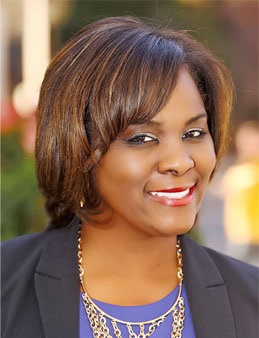There's a growing divide between those who can access services digitally – like education, work and health care -- and those who can't. The issue is top-of-the-mind for housing practitioners, who often work with the very individuals that the divide is hurting the most. Some NeighborWorks network organizations are already working on solutions, such as setting up hotspots and working WiFi into their future projects.
NeighborWorks America's symposium, "Advancing Equity and Prosperity Through Digital Access," offers a chance on Feb. 9 to explore more solutions with experts who have seen what the housing community knows: People need to access the internet where they live. The symposium will explore ways to increase access, build digital literacy, take advantage of government funding and more.


It's essential to work on this now, Turner Lee says. "The pandemic has surfaced just how important being connected is in our society, from visiting doctors to purchasing food and supplies. Having access is no longer a luxury or privilege; it's a necessity." Local communities need to understand that they are a part of closing the divide, she says.
Some NeighborWorks network organizations are just beginning to look at technology and broadband as a way to level the digital playing field. Others have been doing the work and are beginning to expand it. Here are some examples:
For Mia Purcell, manager of economic development for Community Concepts Finance Corporation, the subject isn't new. What is new is federal money coming in via the American Recovery Act, much of it earmarked for broadband. And with that, comes opportunity.
Community Concepts also has grants for Wi-Fi hotspots and secured funding to map out existing fiber and cable and unserved locations. The goal, Purcell says, is to look for gaps and to talk to local providers about expanding their service footprint. Meanwhile, the local broadband committee is surveying residents to gauge the importance of telehealth, remote learning and remote working, finding out services residents deem most essential.
"Our goal is pretty simple: Universal affordable, reliable, high-speed future-ready internet service," Purcell declares. In a previous survey, upwards of 90% of respondents said having good internet service was "very important" to them and to the community as a whole.
Broadband impacts everyone in the country, she says, and the pandemic undercored that. "When COVID hit, the schools sent the kids home to learn. But we knew there were kids who didn't have internet service at home and couldn't do that." Community Concepts ordered more than 160 laptops through the National Digital Equity Center, with digital hotspots embedded in each. "It really brought home the need for better digital service in this area."
In Rhode Island, ONE Neighborhood Builders' mesh new, 2020 Wi-Fi network gave residents free internet access. It also gave staff a look at wider possibilities. "We started with an ‘if-you-build-it-they-will-come scenario,'" says Antonio Rodriguez, assistant director of asset management. "Only in our case it became ‘if you build it, they will use it.'" In the first six months, they saw 200 unique service users. Interns helped boost user numbers by getting the word out. Now, they're at 1,700 unique users.
They've also identified gaps in the network. This month, ONE began Phase II of their plan, using state and local funding to strengthen the network infrastructure and increase range and bandwidth.
"A lack of Wi-Fi can be an economic barrier," says Rodriguez. "To remove that barrier, we'll continue to grow." The organization plans to bring wireless connectivity to its next development, "so residents will have connectivity from Day One." The development, currently known as The Avenue, should be complete in 2023.
The symposium will be offered during NeighborWorks America's 2022 Winter Virtual Training Institute. Register to learn more about digital equity and inclusion, how it impacts communities, and how you can start or expand digital equity work, register for the symposium on Feb. 9.
***
Defining digital equity
What does "digital equity" mean? Leaders in the field talk about it this way:
"I define the digital divide as being a system of poverty," says Nicol Turner Lee, who will give the keynote address during NeighborWorks America's symposium, "Advancing Equity and Prosperity Through Digital Access." "If you're not connected to the internet, you're essentially missing the opportunities that are widely available to other populations that are connected. 'Digital equity' is making sure people have access to the resources and tools that enable them to participate in a digital economy, whether it’s broadband service, a digital device, training or the other collateral to participate – like a credit card. It’s the things you need to be readily connected and the idea that being connected is a way to enroll in digital citizenship."
Yvette Scorse, communications director for the National Digital Inclusion Alliance, refers to "digital equity" as the goal. Inclusion, she says, is a key step to reaching that goal. "Digital inequities don't exist in a vacuum," she says. They're layered in other inequities and injustices that disproportionately affect people of color, women, people experiencing poverty, people with disabilities, older adults, and many other communities. "Reaching digital equity requires holistic solutions that address root causes and provide access to all three elements: High-speed internet, appropriate devices, and the skills necessary to thrive in a digital world."

